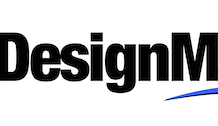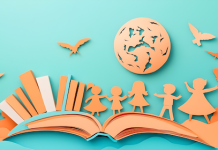Many improvements have been made in conventional offset presses over the years, but they still require water, fountain solution, and in most cases, the use of 1000 to 1200 litres of IPA alcohol per month. In fact, this conventional B1 offset press running two shifts per day will consume around 200 litres of fresh water every day of operation.
Fresh water is used by the offset press, and some of the resulting contaminated water goes down the drain. In addition, more water is used in dampening (fountain) solution, which must be disposed of as a hazardous chemical when it is changed. Because it can be both an art and a science to get the ink/water balance just right, conventional offset printers will often have more makeready waste as well, contributing further to a negative environmental impact.
This is important, since fresh water is critical to supporting human life, and in many parts of the planet. In Europe and particularly in the Mediterranean regions – fresh water is becoming a scarce resource.
As mentioned, IPA alcohol continues to be used, especially by those conventional offset printers who produce applications on non-absorbent materials. Beyond the impact in the printing plant, IPA alcohol contributes even more to a negative environmental impact, from the energy and resources required to manufacture it, to the cost, energy consumption and CO2 emissions associated with transporting thousands and thousands of litres each year to the various printing plants that use it.
Waterless offset printing is a green alternative printing system that runs on standard offset presses. The key to waterless printing is a plate that uses an ink-resistant silicone rubber coating to eliminate the need for achieving ink/water balance as required with the conventional dampening solution.
Waterless offset printing, then, eliminates many of the problems conventional offset printers (and the environment) face. There is no water used in the printing process, thus preserving a precious resource. And since there is no need to establish ink/water balance, presses run up to colour much faster. That means less makeready waste, faster time to market, and the ability to economically produce the shorter runs that are common today.
In addition, waterless offset printing delivers very high quality prints, especially when printing on with non-absorbent substrates such as plastics and metal – high growth and high margin applications for waterless offset printers. It is ideal for security applications such as passports, identification cards, event tickets, bank notes and more. These applications can be difficult to print at the right quality and with the necessary security features using conventional offset printing. It is also ideal for metal decorating applications, another high-growth application opportunity.
Combine the higher margins that these specialised applications deliver with the reduced waste of these more expensive substrates offered by waterless printing and it is a win/win – for the offset printer and for the customer.
Also of note: as the number of newspaper titles and the subscription volumes for newspapers have declined, newspaper printing itself has become more of a service than a profit centre. Waterless offset printing allows newspaper printers to increase press utilisation and deliver more profit to their bottom line by producing high quality commercial printing. Most offset printers should be able to easily convert to waterless printing with minimal investment and training.
As the world becomes more aware of and concerned about the climate emergency, commercial printers can do their part by reducing their overall environmental footprint. Converting to waterless offset printing is a good way to make a substantial reduction in their environmental footprint – for the benefit of their own bottom line; for their customers – especially those that are increasingly looking for sustainable printing; and for the planet.





















